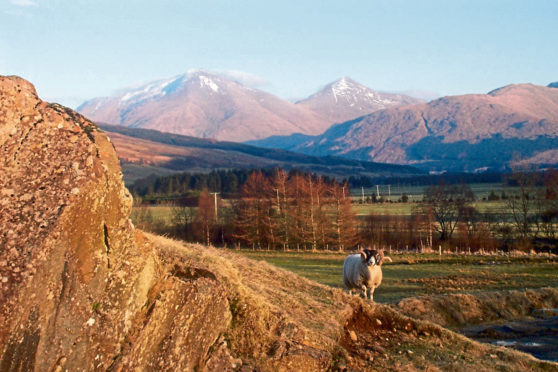SRUC’s Professor Davy McCracken offers an insight into work at the college’s hill and mountain research centre
The wet mountains of the southern Highlands of Scotland are dramatically different in landscape and character from the arid rangelands of the south-western United States.
And from a livestock manager’s perspective, you may think that these two areas have only one issue in common – how best to manage water.
With too much water, in the form of rain, impacting on livestock here and too little water, in the form of dependable watering points, affecting livestock in that part of the US.
But if you look at the livestock systems, primarily focused on sheep here and exclusively on beef there, you find that the challenges they face are very similar.
Both involve grazing livestock at low densities over large areas of relatively unproductive pastures.
A combination of poor nutrition, pests, diseases and predators impacts adversely on both productivity and growth rates during the lambing and calving seasons.
Therefore the hill farmers, crofters and ranchers involved have to sell on their lambs and calves for finishing elsewhere.
And the price obtained for those animals is dictated as much by the buyers’ assessments of their size at the point of sale as opposed to their growth potential at their final store or feedlot destination.
Hence much of what we are focusing on at Kirkton and Auchtertyre is just as relevant in the south-western US, such as genetic improvement of livestock productivity, managing on-farm forage and fodder resources more effectively, using sensors to physically track livestock or using Electronic Identification (EID) associated equipment to better track the performance of individual animals.
I am therefore happy to announce that my team here in Scotland are part of a larger consortium, led by colleagues at New Mexico State University, who have just been awarded a major research grant by the United States Department of Agriculture.
Their research is focused on helping south-western cattle ranchers find more economical and sustainable ways to raise beef cattle using precision farming techniques.
Our input is relatively small and revolves around our recent experience of establishing the Internet of Things (IoT) hardware and associated technology at Kirkton and Auchtertyre.
As I have said in previous articles, this allows us to track livestock and measure environmental variables remotely.
We will be looking to use this opportunity to grow our research and education connections at New Mexico State University as well as elsewhere in the US.
